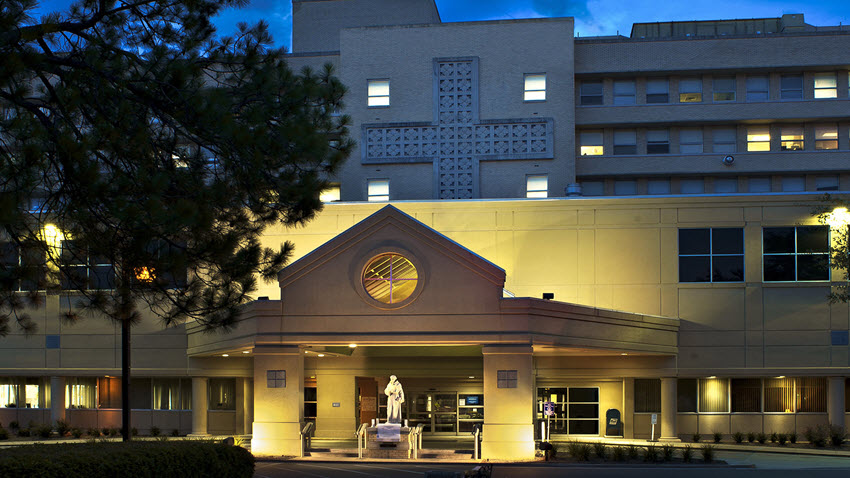Heart Attack Treatment & Prevention
If you think you or a loved one is experiencing a heart attack, call 911 immediately. Do not attempt to drive to the hospital. Survive, don’t drive.
At St. Francis Medical Center, we know what’s at stake during a heart attack. That’s why we’ve brought together the most advanced emergency heart care technology and a dedicated team ready to respond at a moment’s notice.
You and your family can take comfort knowing your heart is in the right place. Through seamless coordination between our emergency physicians and paramedics at the scene, we’ve dramatically reduced the time to treatment—saving many more lives along the way.
Know the Heart Attack Warning Signs
- Chest pain or discomfort, like pressure, squeezing, burning, aching or tightness
- Jaw or shoulder pain
- Sweating and nausea
- Weakness and shortness of breath
- Fatigue, often the first and most unrecognized symptom
- Back pain between the shoulder blades
- Some women mistake a heart attack for anxiety or a panic attack
- Pain in one or both arms
- Back or stomach pain
- Abdominal discomfort that may feel like indigestion
Early Heart Attack Care (EHAC)
Early Heart Attack Care (EHAC) education teaches you to recognize the early signs and symptoms of a heart attack. We want you to become educated so you can save a life – even if it’s yours. Click here for additional information from the Deputy Heart Attack (EHAC) program and click here to take the EHAC standard course.
Hands-Only CPR
Did you know that cardiopulmonary resuscitation (CPR), when performed immediately, can double or triple a cardiac arrest victim's chance of survival? Hands-only CPR has been shown to be as effective as conventional CPR for cardiac arrest at home, at work or in public. There are two easy steps for hands-only CPR in this order:
-
Call 911 if you see a teen or adult suddenly collapse.
- Perform hands-only CPR: Push hard and fast in the center of the chest to the beat of a familiar song that thas 100 to 120 beats per minute. Song examples include “Stayin’ Alive” by the Bee Gees, “Crazy in Love” by Beyoncé featuring Jay-Z, “Hips Don’t Lie” by Shakira” or “Walk the Line” by Johnny Cash. You will feel more confident performing Hands-Only CPR and are more likely to remember the correct rate when trained to the beat of a familiar song.
- For instruction on hands-only CPR, watch the video below. For additional resources, click here.

